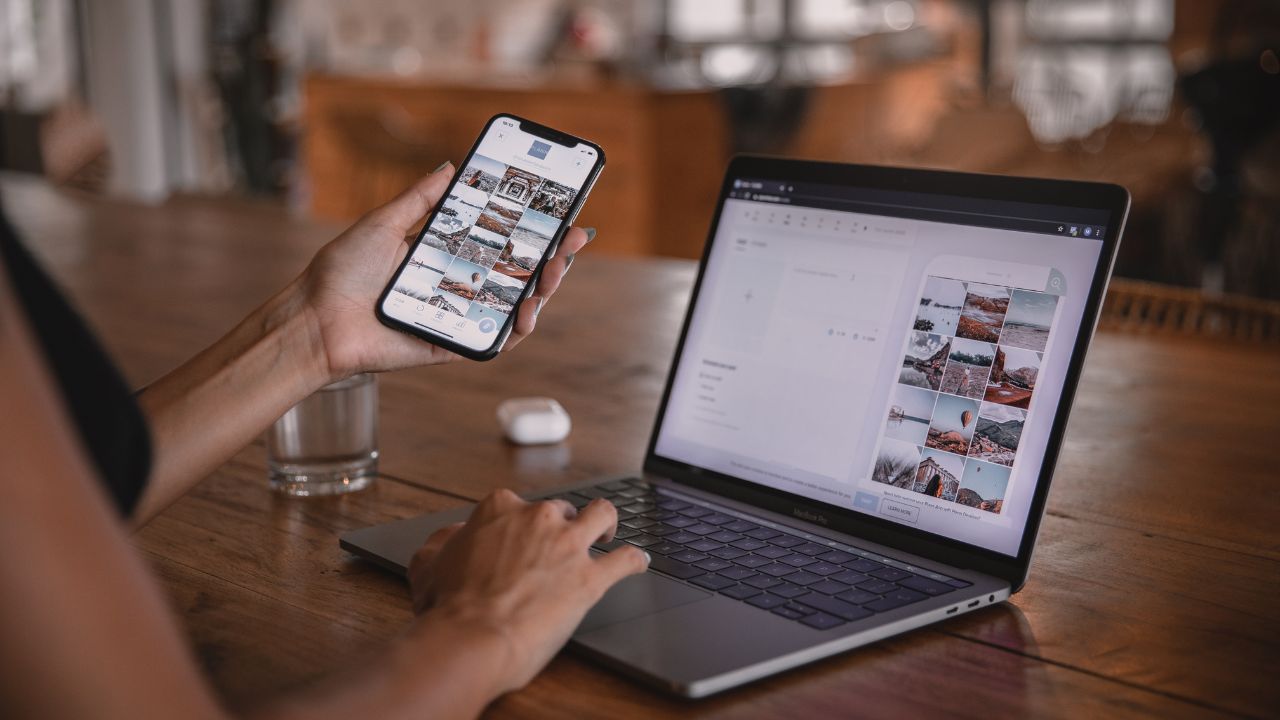For decades, the laptop has been the go-to device for professionals. Portable, powerful, and versatile, it replaced the desktop as the primary tool for modern work. But in recent years, smartphones have grown into capable mini-computers—handling emails, video calls, document editing, and even design work. By 2025, the debate has intensified: can smartphones replace laptops as the ultimate work device, or do laptops still hold the edge?
This article examines the strengths and limitations of both smartphones and laptops in a work context. From performance and portability to cost, security, and productivity, understanding which device suits different types of professionals in today’s rapidly changing digital world.
The Rise of Smartphones as Work Devices
Smartphones have evolved dramatically. What began as a communication tool is now a pocket-sized powerhouse. With powerful processors, high-resolution displays, AI-driven assistants, and cloud connectivity, smartphones are capable of tasks once exclusive to laptops.
- Mobile-first apps: Microsoft Office, Google Workspace, and Adobe apps now offer full-featured mobile versions.
- Cloud storage: Files sync instantly across devices, making a smartphone a gateway to all your work.
- 5G networks: High-speed mobile internet ensures seamless browsing, streaming, and conferencing.
- Mobile accessories: Portable keyboards, styluses, and wireless displays enhance smartphone productivity.
The smartphone’s biggest advantage? Extreme portability. It’s always in your pocket, ready to work anytime, anywhere.
Why Laptops Still Dominate Professional Work
Despite smartphone advances, laptops continue to lead in professional settings.
- Processing power: Laptops still outperform smartphones in multitasking, heavy software, and large data handling.
- Full-size keyboard and trackpad: Ideal for long writing sessions, coding, or design.
- Larger screen: Better for spreadsheets, presentations, and multitasking.
- Professional software: Many specialised tools (CAD, high-end video editing, development environments) are not fully optimised for mobile.
For professionals who need robust computing power and flexibility, laptops remain essential.
Comparing Smartphones and Laptops in 2025
1. Portability
- Smartphones: Ultra-portable, always accessible. Great for quick work on the go.
- Laptops: Portable but bulkier. Best for longer, stationary work sessions.
Winner: Smartphones.
2. Performance and Power
- Smartphones: Powerful enough for light to moderate tasks, but limited in multitasking and high-end applications.
- Laptops: Handle demanding workloads—coding, video rendering, large spreadsheets—without compromise.
Winner: Laptops.
3. User Experience
- Smartphones: Touchscreen, compact interface, sometimes limiting for productivity.
- Laptops: Larger displays and physical keyboards support extended work comfortably.
Winner: Laptops.
4. Connectivity and Ecosystem
- Smartphones: 5G, hotspot capability, app-based ecosystem. Excellent for communication.
- Laptops: Wider ports (USB-C, HDMI), better for external devices. Strong integration with professional tools.
Winner: Tie (depends on use case).
5. Cost
- Smartphones: High-end models cost as much as laptops but double as communication tools.
- Laptops: More expensive for high-performance models but offer longevity for professional tasks.
Winner: Smartphones for casual users, laptops for professionals.
6. Security
- Smartphones: Advanced biometrics (face unlock, fingerprint scanning), but higher risk if lost/stolen.
- Laptops: Stronger enterprise-grade security, easier to manage in corporate environments.
Winner: Laptops for business, smartphones for personal work.
Best Use Cases for Smartphones
- On-the-go professionals: Salespeople, journalists, consultants.
- Quick communication: Emails, calls, chat apps, video conferencing.
- Content creation on the move: Photography, short-form videos, social media.
- Students and freelancers: Basic document editing, presentations, and collaboration.
Best Use Cases for Laptops
- Developers and engineers: Coding, software development, testing.
- Creative professionals: Graphic design, 3D modelling, video editing.
- Business analysts and executives: Handling data-heavy spreadsheets, presentations.
- Remote workers: Long work sessions, multitasking across multiple applications.
Hybrid Workflows: The Best of Both Worlds
In 2025, many professionals adopt a hybrid device strategy:
- Use smartphones for mobility, quick updates, and communication.
- Use laptops for deep work, multitasking, and specialised tasks.
- Rely on cloud storage to seamlessly switch between devices.
Accessories like wireless keyboards, docking stations, and foldable displays are bridging the gap, allowing smartphones to mimic laptop functionality when needed.
The Future: Will Smartphones Replace Laptops?
Some predict smartphones will eventually replace laptops as primary work devices. With foldable screens, AI-powered productivity, and stronger cloud integration, the gap is narrowing.
However, laptops are unlikely to disappear soon. They remain irreplaceable for professionals requiring large screens, precise input, and heavy computing power. The future will likely be convergence—smartphones becoming more powerful, laptops becoming lighter and more versatile, and cloud ecosystems tying them together.
Frequently Asked Questions
Q: Can I use only my smartphone for work in 2025?
Yes, for light work—emails, documents, communication. But for complex or intensive tasks, laptops are still necessary.
Q: Are tablets a better alternative than smartphones or laptops?
Tablets (with keyboards) sit in between. They offer portability with better screen space, useful for many professionals.
Q: Which device lasts longer—laptop or smartphone?
Laptops generally last longer in performance, while smartphones often require upgrading every 3–4 years.
In 2025, the question isn’t whether smartphones or laptops are better; it’s about which is better for you. Smartphones shine in portability and convenience, making them indispensable for communication and quick tasks. Laptops, however, remain the powerhouse for productivity, creativity, and professional-grade work.
The smartest choice for most professionals is not either-or, but both. Smartphones and laptops complement each other, offering flexibility across different contexts. By leveraging each device’s strengths, you can create a workflow that maximises both mobility and productivity in the modern digital world.








Leave a Comment